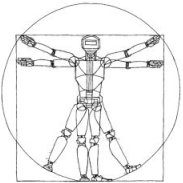Robotics: Science and Systems XVII
NeuroBEM: Hybrid Aerodynamic Quadrotor Model
Leonard Bauersfeld*, Elia Kaufmann*, Philipp Foehn, Sihao Sun, Davide Scaramuzza* These authors contributed equally
Abstract:
Quadrotors are extremely agile; so much in fact; that classic first-principle-models come to their limits. Aerodynamic effects; while insignificant at low speeds; become the dominant model defect during high speeds or agile maneuvers. Accurate modeling is needed to design robust high-performance control systems and enable flying close to the platform's physical limits. We propose a hybrid approach fusing first principles and learning to model quadrotors and their aerodynamic effects with unprecedented accuracy. First principles fail to capture such aerodynamic effects; rendering traditional approaches inaccurate when used for simulation or controller tuning. Data-driven approaches try to capture aerodynamic effects with blackbox modeling; such as neural networks; however; they struggle to robustly generalize to arbitrary flight conditions. Our hybrid approach unifies and outperforms both first-principles blade-element momentum theory and learned residual dynamics. It is evaluated in one of the world's largest motion-capture systems; using autonomous-quadrotor-flight data at speeds up to 65 km/h. The resulting model captures the aerodynamic thrust; torques; and parasitic effects with astonishing accuracy; outperforming existing models with 50% reduced prediction errors; and shows strong generalization capabilities beyond the training set.
Bibtex:
@INPROCEEDINGS{Bauersfeld-RSS-21,
AUTHOR = {Leonard Bauersfeld AND Elia Kaufmann AND Philipp Foehn AND Sihao Sun AND Davide Scaramuzza},
TITLE = {{NeuroBEM: Hybrid Aerodynamic Quadrotor Model}},
BOOKTITLE = {Proceedings of Robotics: Science and Systems},
YEAR = {2021},
ADDRESS = {Virtual},
MONTH = {July},
DOI = {10.15607/RSS.2021.XVII.042}
}
